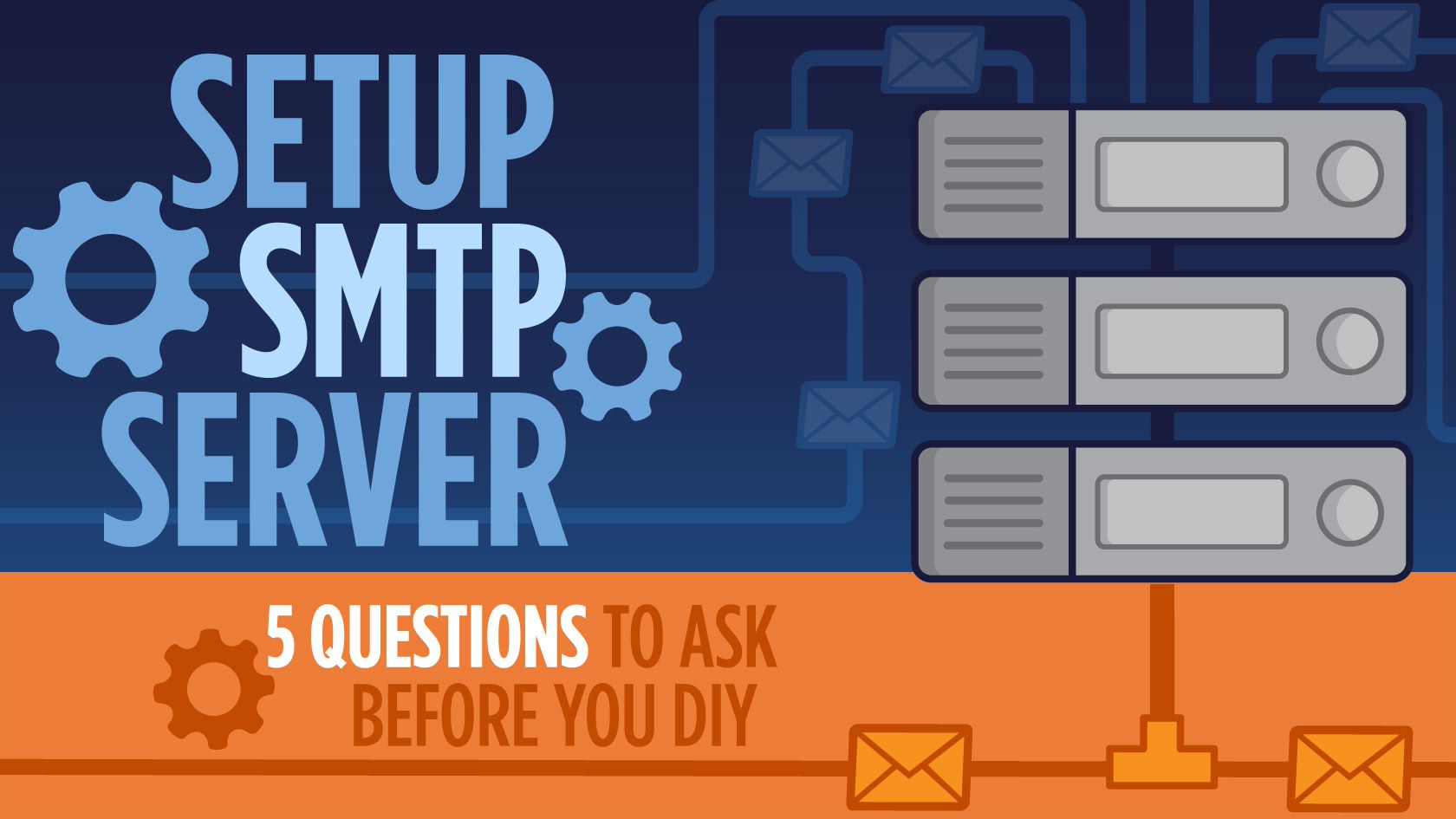
In this article, we’ll discuss whether or not you should setup an SMTP server using your own on-premises email solution, or go with a hosted SMTP relay provider.
If the concept of SMTP is new to you, then I recommend starting with this article – What’s an SMTP Relay Service?
Otherwise, let’s continue!
Options for Setting Up an SMTP Server
When it comes to building an SMTP server, there are a couple of routes that you can take.
You can use a hosted SMTP relay service that provides scalable email relaying capabilities right out of the box.
Or you can setup your own SMTP server, by building on top of an open source SMTP server solution. Sendmail SMTP and Postfix SMTP are two examples of open source solutions. But here’s the big question…
… Is building your own SMTP server really worth it?
Consider this question from Server Fault, a popular question and answer site for system and network administrators.
“Is setting up my own SMTP server to send email a waste of time with regards to deliverability?”

Our answer:
While building and managing your own SMTP server is certainly acceptable in many cases (in fact SocketLabs has helped companies do this for more than 15 years) it may not always be the best option… especially when you’re looking to maximize your email deliverability over the long term.
If you want to setup an SMTP server to send email then here are the top 5 questions that you should ask yourself before you DIY.
1) How much time will I invest into SMTP server setup?
So you want to build an SMTP server?
Sure… setting up your own SMTP server seems like a good idea at first.
You’ll have full control over your infrastructure, which may come at a major cost (we’ll cover that later).
And when you set up an SMTP server yourself, you’ll definitely feel a sense of accomplishment when you finish.
The downside however, is that doing it yourself can take hours, days, or even weeks depending upon your level of experience.
Think about it this way…
Setting up your own SMTP server is like building a jumbo jet.
You’ll need to know how to build and fly the plane, or you’ll need someone on your staff who can do it for you.
Alternatively, subscribing to an SMTP relay service, is like buying a plane ticket.
You simply board the plane without worrying about all of the technical details about how your jumbo jet gets from point A to point B, without falling out of the sky.
The bottom line is that you’ll save time by using an SMTP relay service that hosts and manages your email server for you.
2) Do I have the resources and knowledge to setup my own email infrastructure?
There’s more to delivering email over SMTP than what meets the eye. In this case, we’re talking about your email infrastructure.
Think of your email infrastructure as the underlying foundation that makes SMTP work.
This means that either you, or an experienced sysadmin on your staff, must understand some of the following concepts around SMTP server setup:
- How to build and manage a mail-transfer-agent (MTA). This requires knowledge of various email protocol and RFCs
- Where to host your MTA for high availability
- SPF best practices to restrict mail from your domain to specific IP ranges
- How and when to use DKIM and DMARC signing
- Advanced email delivery knowledge across dozens of ISPs including, but not limited to Gmail, Outlook, Yahoo Mail, etc…
- And so much more related to infrastructure and authentication
The above only scratches the surface of what goes into successfully building and managing an email infrastructure.
3) Will setting up my own SMTP server positively or negatively impact my email deliverability?
Many capable people have setup an SMTP server on their own, only to eventually switch over to an SMTP relay service.
The reason for this is because mailbox providers like Gmail and Outlook are constantly developing their anti-spam technologies, making it harder to reach the inbox.
The value of using an SMTP relay service is that you can avoid the many pitfalls of setting up your own email server.
For example, when using an SMTP provider, you don’t have to worry about:
- Managing the email deliverability rules in your infrastructure
- Monitoring blacklists to make sure your company is not on them (the ESP will usually do this for you!)
- Setting up and monitoring your IP addresses to maximize deliverability
- Figuring out how to manage bounces to intelligently remove bad email addresses from your list
This brings us to the next question that you should ask yourself before building your own SMTP server…
4) What’s my sending volume?
Before you create your own SMTP server, it’s important to know how many emails per month you plan to relay through the server.
Why?
Because as you scale your email volume up, avoiding email deliverability issues also becomes harder. For example, sending over a dedicated IP address and maintaining a good sender reputation becomes increasingly more important.
The reality is that in the majority of cases, building your own SMTP server is not worth the effort, especially as you scale.
5) How to setup SMTP servers to send emails?
As mentioned, the alternative to building and managing your own SMTP server is using a hosted SMTP relay service. An SMTP as-a-service gives you the ability to relay mail through SMTP, without having to build and manage your infrastructure yourself.
So how do you choose the right SMTP relay service provider? Use this 5-point checklist to choose the right one.
To learn more about how to get started with an SMTP service, just follow these instructions.
If you have further questions on SMTP server setup, you can always chat with one of the SocketLabs experts to get the answers you need.








